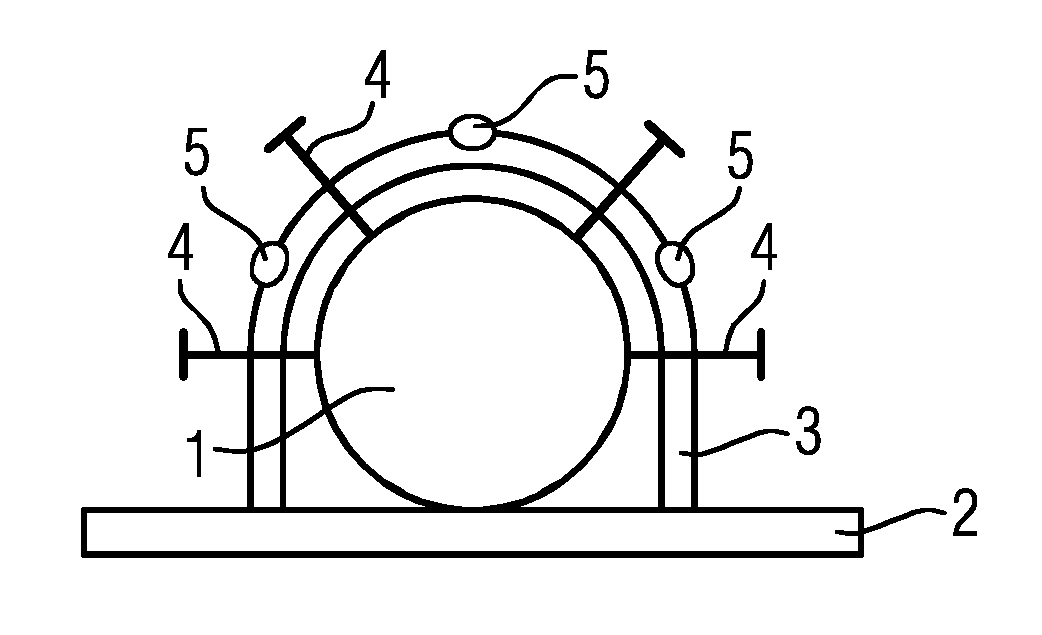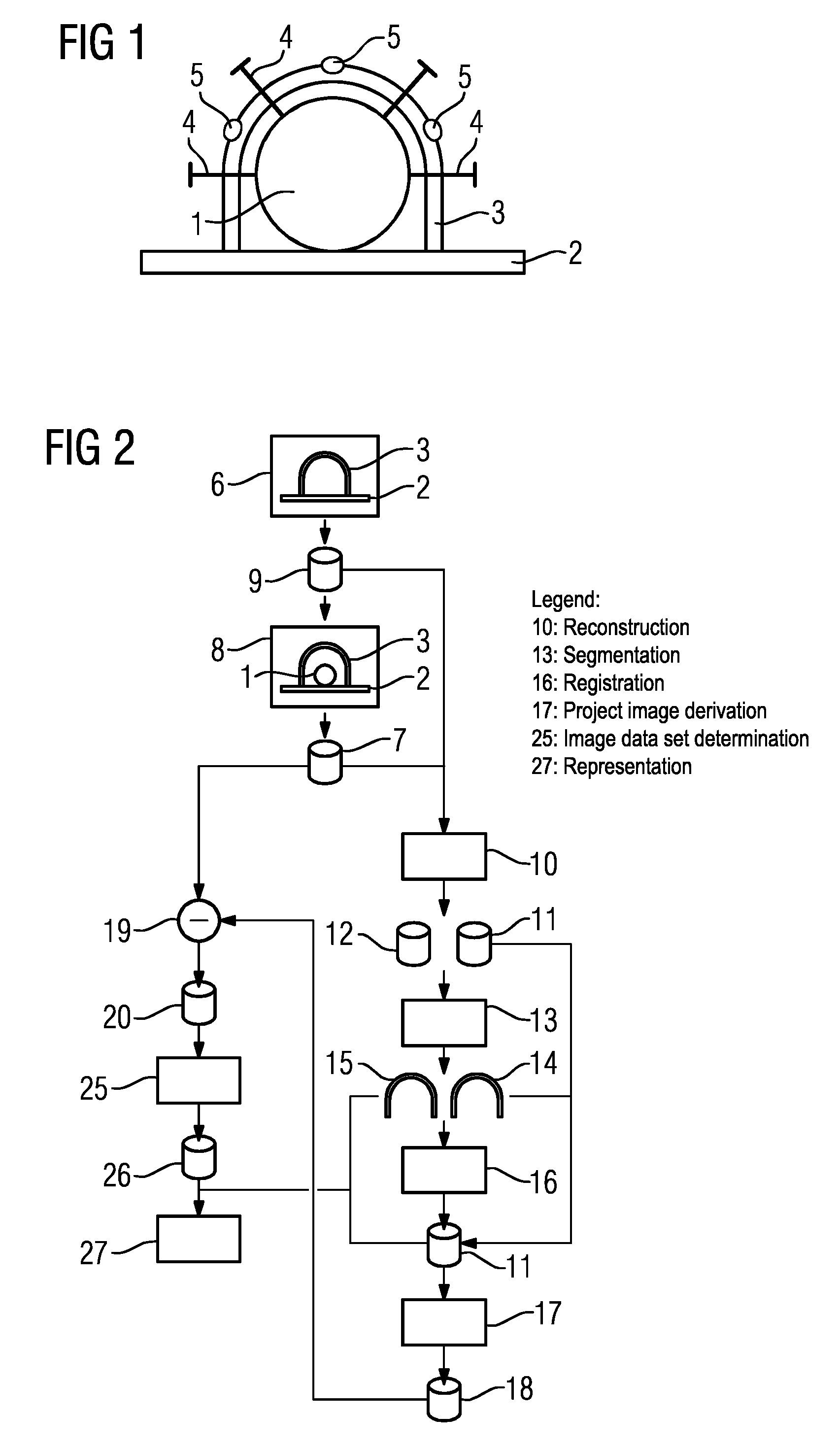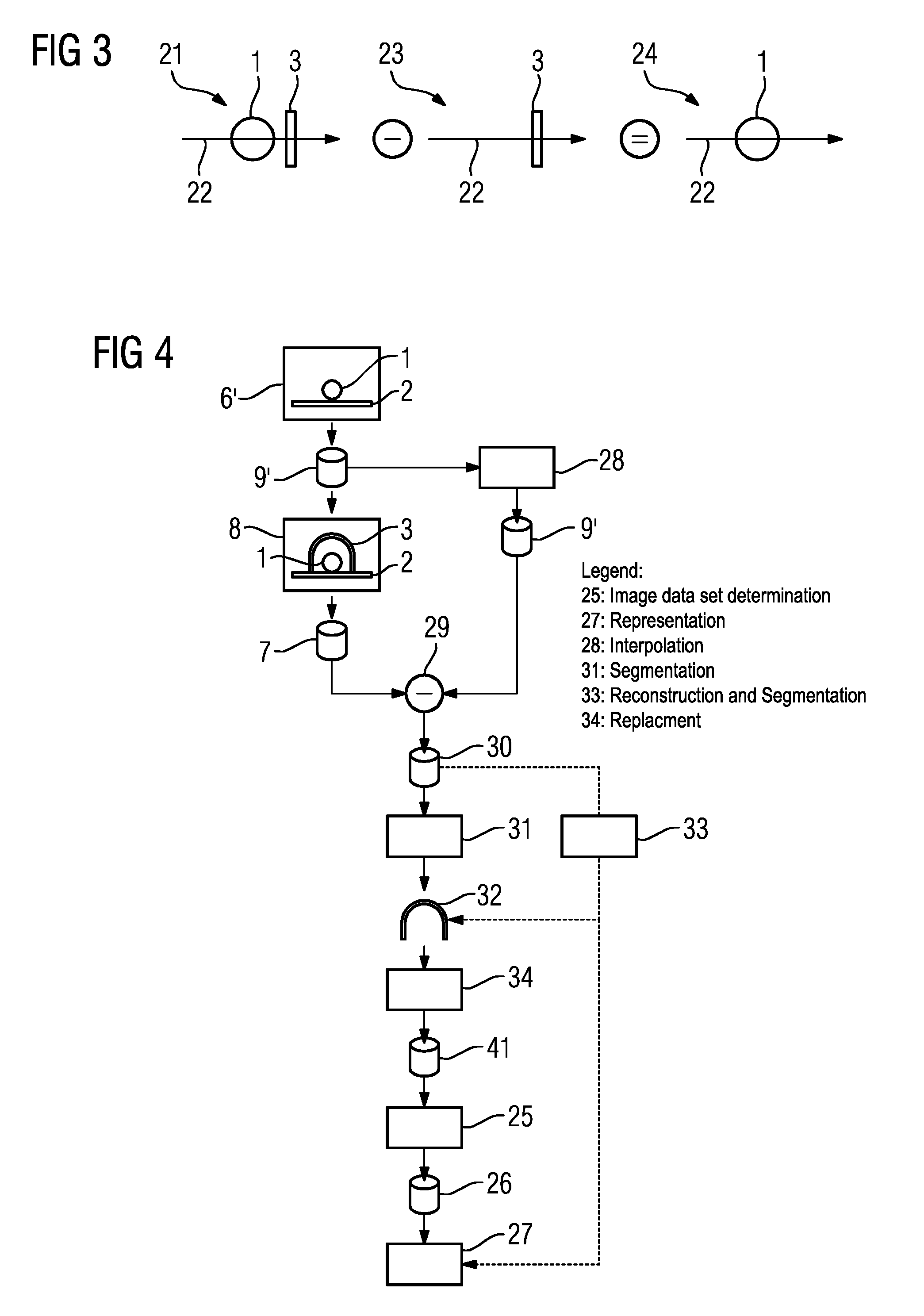Method for determining an artifact-reduced three-dimensional image data set and X-ray device
a three-dimensional image and data set technology, applied in the field of method for determining an artifact-reduced three-dimensional image data set and x-ray device, can solve the problems of artifacts in the image data set, which are for the most part extremely expensive, and occur in such investigations, and achieve the effect of improving the image quality of the image data s
- Summary
- Abstract
- Description
- Claims
- Application Information
AI Technical Summary
Benefits of technology
Problems solved by technology
Method used
Image
Examples
first embodiment
[0046]FIG. 2 shows a basic flowchart of a first exemplary embodiment according to the method.
[0047]The stereotactic frame 3 which is already adjusted as well as possible to the head 1 is initially arranged on the patient table 2 without the patient. In a step 6, under the same capture conditions and using the same capture parameters as later when capturing the projection images of the primary data set7 in a step 8, capture then takes place of two-dimensional projection images of a mask data set 9, in which projection images consequently only the stereotactic frame 3 (with the markers 5) is contained.
[0048]Then in step 8 the patient is firstly positioned on the patient table 2, during which the stereotactic frame 3 remains motionless. Merely minor settings, consequently adjustments, of the stereotactic frame 3 to the head 1 are carried out before the capture of the primary data set which then shows the head 1 and the stereotactic frame 3 (with the markers 5) on its projection images ...
second embodiment
[0056]FIG. 4 shows a flowchart of the second exemplary embodiment of the method which corresponds to the In this situation the same elements are identified by the same reference characters for the sake of simpler presentation.
[0057]A mask data set 9′ is also captured in the second exemplary embodiment in a step 6′, except that here at the time of capture in step 6′ solely the head 1 is situated on the patient table 2 but not the stereotactic apparatus 3 with the markers 5. The projection images of the mask data set 9′ consequently show only the head 1.
[0058]The patient is now not moved and the stereotactic frame 3 is attached and appropriately adjusted so that in a step 8 the primary data set 7 can be captured again, the projection images of which show the head 1 and the stereotactic frame 3 (with the markers 5).
[0059]In this situation it should be noted here that for the sake of simplified presentation a registration to be established where applicable on the basis of the head 1 or...
PUM
 Login to View More
Login to View More Abstract
Description
Claims
Application Information
 Login to View More
Login to View More - R&D
- Intellectual Property
- Life Sciences
- Materials
- Tech Scout
- Unparalleled Data Quality
- Higher Quality Content
- 60% Fewer Hallucinations
Browse by: Latest US Patents, China's latest patents, Technical Efficacy Thesaurus, Application Domain, Technology Topic, Popular Technical Reports.
© 2025 PatSnap. All rights reserved.Legal|Privacy policy|Modern Slavery Act Transparency Statement|Sitemap|About US| Contact US: help@patsnap.com



